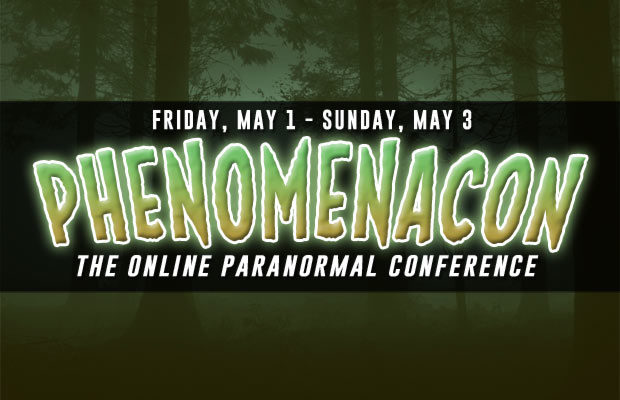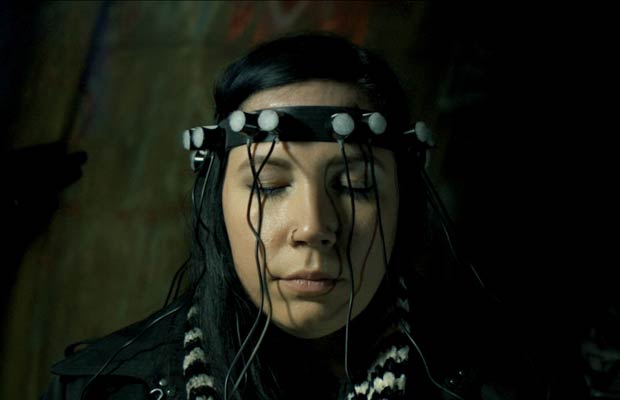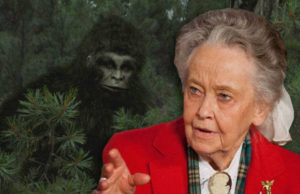 A new scientific paper in Primates, summarized by NPR’s Barbara King,1 ventures into the terra incognita of animal consciousness. We are grateful to her since it saves me from shelling out forty bucks to download the pdf.2
A new scientific paper in Primates, summarized by NPR’s Barbara King,1 ventures into the terra incognita of animal consciousness. We are grateful to her since it saves me from shelling out forty bucks to download the pdf.2
Central to the paper is the observation of a male marmoset, a New World monkey, comforting his mate after she fell to the ground, fatally injuring her head. Since the appellations F1B and M1B are so impersonal, I’ll call ’em Henry and Mabel. Henry and Mabel have eight kids, currently caring for two babies, when Mabel stumbled out of her tree.
There’s video, illustrating the first few lines of a greater picture that animals are alien intelligences, rather than simple meat machines existing for the sole purpose of image macros on reddit. Researchers Bezerra, Keasey, Schiel, and da Silva Souto conclude:
The data provide an interesting insight into compassionate caretaking behaviours in New World primates as well as the pair-bond systems of common marmosets. These are rare observations, and thus their detailed descriptions are essential if we are to create a comparative and enhanced understanding of human and nonhuman primate thanatology.
ADVERTISEMENT
This video shows Mabel’s last few minutes. If you’re a sensitive type, don’t watch.
Here’s a tissue, I’m sorry you had to watch that, but remember she was with loved ones.
Bringing me to a big question. Do animals have near death, or end of life, experiences?
Working observationally, Mabel’s suffering a seizure. In Mabel’s remaining moments, she suffers an episode, visually similar to reflex anoxic seizures (RAS). Compare with this poor kid. Spoiler: He’s okay.
These RAS are, usually, caused by a bump on the head. An episode can be triggered by a variety of stimuli, like pain, emotion, or seeing blood, precipitating brief cardiac arrest. While visually similar, there’s some superficial inquiry into parallels between near-death experiences and RAS, most notably by Dr. Susan Blackmore. She argues anoxia, a lack of oxygen, can trigger random firings of neurons, giving rise to hallucinations. With the confluence of seizures, and brief cardiac arrest, there’s an intriguing, if tenuous, correlation if one references The Lancet paper Near-Death Experiences in Cardiac Arrest Survivors.34
 Couple that with news from 2013 showing brains of dying rats might show the mechanism behind near death experiences (NDEs)5. Jimo Borjigin at the University of Michigan – Ann Arbor observed continued and heightened brain activity during the first stages of cardiac arrest. Also quoted in the article is NDE researcher Dr. Sam Parnia stating, “We have no evidence at all that the rats had any near-death experiences or whether animals can have any such type of experience”.
Couple that with news from 2013 showing brains of dying rats might show the mechanism behind near death experiences (NDEs)5. Jimo Borjigin at the University of Michigan – Ann Arbor observed continued and heightened brain activity during the first stages of cardiac arrest. Also quoted in the article is NDE researcher Dr. Sam Parnia stating, “We have no evidence at all that the rats had any near-death experiences or whether animals can have any such type of experience”.
Dr. Parnia is right. We lack animal NDE survivor accounts like the ones pervading human culture. While there have been advances regarding interspecies communication, like the development of a tool to translate dolphin into English6, and the capacity in elephants to distinguish humans by age, appearance, and language7, we’re still a long way off from hearing Marley relate how Garfield was beckoning him to heaven but didn’t want to go because that cat was shady in life, always getting him into trouble.
These kinds of accounts are notable, and I cite Greg Taylor’s opus Stop Worrying! There Probably Is An Afterlife.
Modern researchers of the near-death experience have said a similar thing that it is only through hearing the direct testimony of the witness that one truly feels the convincing nature of such cases.
“Such cases”, being NDEs. But in that absence, researchers could draw upon Peak In Darien events. For those of you keeping score, Peak In Darien is when people see the dead who are not known to have died.8 Less reliable, but no less compelling, are evidence of animal ghosts,9 and visions of deceased pets during NDEs.10
What do you think? Do so-called ‘dumb’ animals have glimpses of the afterlife, experiencing the same phenomenon as humans? I look forward to the discusson on Facebook, at Twitter, or in the comments below.
MORE GREAT STORIES FROM WEEK IN WEIRD:

http://www.npr.org/blogs/13.7/2014/04/23/306251771/rare-observations-capture-marmoset-grief-in-the-wild ↩
http://link.springer.com/article/10.1007/s10329-014-0412-8 ↩
http://www.ncbi.nlm.nih.gov/pubmed/16186035 ↩
http://profezie3m.altervista.org/archivio/TheLancet_NDE.htm ↩
http://www.npr.org/blogs/health/2013/08/12/211324316/brains-of-dying-rats-yield-clues-about-near-death-experiences ↩
http://www.popsci.com/article/dolphin-squeak-english-translator-works-real-time ↩
http://phenomena.nationalgeographic.com/2014/03/10/elephants-hear-age-gender-ethnicity-in-human-voices/ ↩
http://www.newdualism.org/nde-papers/Greyson/Greyson-Anthropology%20and%20Humanism_2010-35-159-171.pdf ↩
http://weekinweird.com/2013/11/22/shadowy-shenanigans-at-the-shanley-ghost-cat-captured-on-film/ ↩
http://www.near-death.com/animals.html ↩
You may also like...
-
Advertisement
Subscribe for the latest Weird News Delivered Daily!
Join the world’s only mobile paranormal museum!
World’s Weirdest News in your Social Feed!
Latest Stories

Phenomenacon: Attend the World’s First Online Paranormal Conference, Featuring Your Favorite Paranormal TV Stars
Martin Nelson | 04/22/2020With the onset of a global pandemic causing the shutdown of fan conventions all over the world, it was only a matter of time before the cancellations hit the...
5
Groundbreaking Paranormal Documentary Series “Hellier” Returns with Ten Haunting Episodes of Appalachian Mystery
Martin Nelson | 11/28/2019There’s something strange moving through Kentucky like a virus, twisting through the Mammoth Cave system and hovering in the skies above the Appalachian Mountains. While might catch glimpses of...
5
Travel Channel’s “Haunted Salem: Live” Features the “Paranormal Dream-Team” in Live, Four-Hour Ghost Hunt
Martin Nelson | 09/27/2019Travel Channel is kicking off Halloween season on October 4th with a very special live event that brings together more of the network’s top paranormal stars than you can...
5
Meet Devin Person, a Real-Life Wizard Who Grants Wishes on the New York City Subway
Greg Newkirk | 06/11/2019For most of us, ignoring the strange people on the subway is second nature, but if you ever find yourself in the tunnels below New York City and you...
5Stories from Around the Internet
#PLANETWEIRD ON INSTAGRAM
About Week in Weird
Week In Weird is one of the web's most-visited destinations for all things weird, bringing you the latest fringe news, original articles featuring real investigations into unexplained phenomena, eyewitness reports of encounters with the anomalous, and interviews with notable figures in the fields of extra normal study.
Week In Weird is part of the Planet Weird family, brought to you by the paranormal adventures of Greg Newkirk and Dana Matthews, professional weirdos investigating the unexplained by engaging the strange.
- MORE ABOUT WEEK IN WEIRD
- REPORT A SIGHTING / CONTACT
- ADVERTISE WITH USFOLLOW PLANET WEIRD ON TWITTER
GREG & DANA: INVESTIGATING THE UNEXPLAINED
Content copyright © 2016 Planet Weird unless otherwise noted.







You must be logged in to post a comment Login